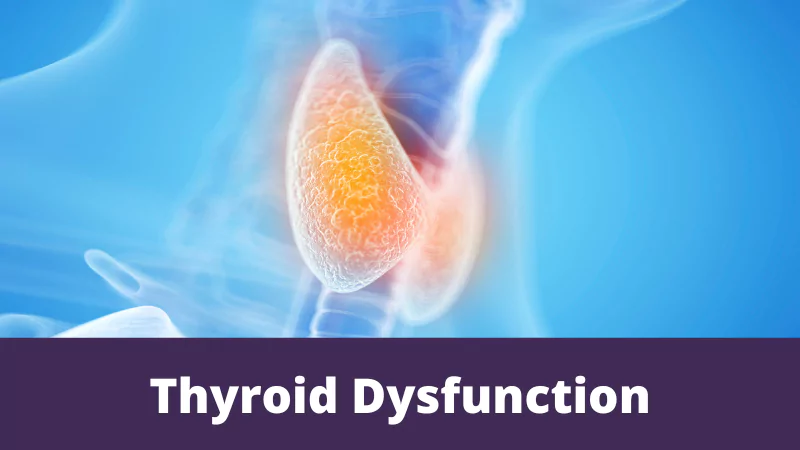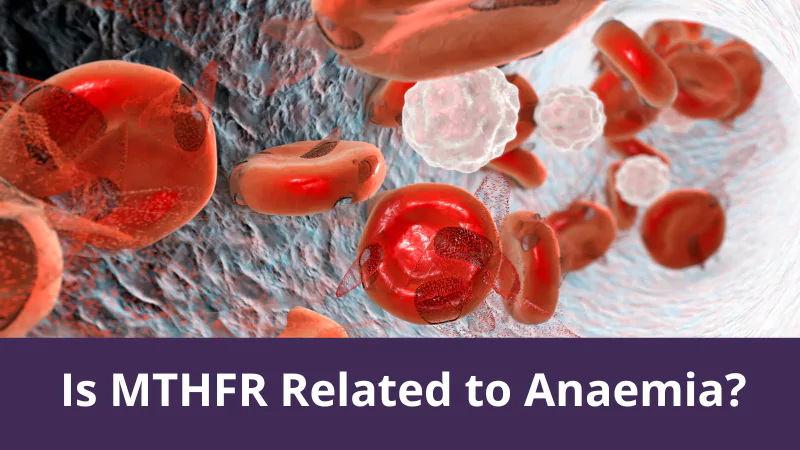Folate and Brain
Is 5-MTHF (methylfolate) better for the brain than folic acid?
Methylenetetrahydrofolate reductase (MTHFR) is required for the formation of 5-MTHF in the body, and thus MTHFR deficiency reduces the distribution of folate and the balance between folate for nucleotide synthesis as well as methionine synthesis.[i] The consequences are an increase in homocysteine in the blood, lower methylation, and higher non-methylated folate in the body.
The most severe impact is that MTHFR deficiency affects brain function and development, because S-adenosylmethionine, as an important methyl group, is needed by the brain to form and maintain myelin; and methylation is also needed to keep the brain function ongoing.[ii] Currently, the impact of MTHFR deficiency on the brain has been studied intensively, and it shows first-hand the difference between folic acid and 5-MTHF on the brain.
Comparing Folic Acid, Folinic Acid and 5-MTHF in MTHFR Deficiency
A most recent scientific report studied the role or effect of folic acid, folinic acid and 5-MTHF when they are used to treat severe MTHFR deficiency.2 Severe MTHFR deficiency is rare . However these studies are helping to highlight which folates are better for us to use. Is it folic, folinic or 5-MTHF?
Severe MTHFR deficiency requires a combination of treatment agents due to the severity of the condition. The combination treatment includes betaine, hydroxocobalamin and folate; and the three agents work together to reduce homocysteine, increase methionine, and increase folate level in the brain.[iii] In this combination, betaine is used to lower homocysteine and increase methionine levels, because it acts as a methyl donor for the re-methylation of homocysteine to methionine in the liver; and hydroxocobalamin will be converted to methylcobalamin in the body, where it works together with 5-MTHF for methionine production.
The study compares the efficacies between folic acid, folinic acid and 5-MTHF, and each one of them was used as the source of folate in the combination treatment mentioned above, because theoretically, both folic acid and folinic acid can be converted to 5-MTHF in the body. Before the critical clinical study, two other reports supply preliminary information that 5-MTHF may be better than folic acid in treating severe MTHFR deficiency. One of the reports , a mouse study ,showed that after 5-MTHF was used to treat the pregnant mouse mothers, it reduced the mortality in the pups, but this effect did not happen when folic acid was used instead of 5-MTHF.[iv] The other report is about a single case of severe MTHFR deficiency in humans, and it shows 5-MTHF had better clinical effect compared to folinic acid.[v]
Based on the above information, the report studied three independent cases of severe MTHFR deficiency, and treated them with folic acid, folinic acid or 5-MTHF.3 Before the treatments, the folate levels in the brains of the three patients were so low that they were undetectable. After treatments with either folic acid or folinic acid orally, the folate levels in the brains of the three patients were still too low to be detectable. Only after treatments with oral 5-MTHF and relatively higher doses, the folate levels in the brain were increased to higher levels. This clinical study demonstrates that 5-MTHF is better than both folic acid and folinic acid in protecting the brain, particularly in the situation of MTHFR deficiency.
Why Betaine Does Not Work Well Here?
In the combination treatments, even though betaine can help convert homocysteine to methionine in the liver, it does not work well in the brain because betaine can hardly cross the blood-brain barrier.[vi] The blood-brain barrier works like a fire-wall to protect a normal brain, and it filters and blocks most unnecessary or harmful materials out of the brain. But it also prevents some medications such as betaine from reaching the brain to take effect.
The reason betaine was considered was because it can increase methionine and S-adenosylmethionine in the blood; and this may provide a sufficient supply of both methionine and S-adenosylmethionine through the blood to the brain for methylation reactions, which may help the brain to survive the lower levels of 5-MTHF in the brain itself.[vii] But this turned out not to be the case. Some of the patients with severe MTHFR deficiency were treated early with betaine, and they initially seemed to be doing well.[viii] But long-term outcomes from other patients are poor when treated with betaine without 5-MTHF, and possibly develop hydrocephalus due to long-term lower levels of 5-MTHF in the brain.
Indeed, an article summarized studies of severe MTHFR deficiency patients treated with betaine.7 It found that only 5 patients out of 36 patients treated early with betaine had satisfactory outcomes, both in terms of growth and brain development. But this article only monitored these patients for a relatively short period of time, for 1-3 years. Other reports show that lower levels of 5-MTHF in the brain for a longer term may be a risk factor for brain degeneration occurring at a later age, despite the treatment with betaine. Consequently, it is more reasonable and lower risk to use folate to replace betaine, particularly methyl folate 5-MTHF.
Why 5-MTHF is Better Than Folic Acid and Folinic Acid in the Brain?
Folic acid is a synthetic agent, and thus it has no function in the body until it is converted to 5-MTHF. This conversion process requires functioning enzymes and particularly DHFR and MTHFR. As we know DHFR has limited capacity to metabolise folic acid and is easily overwhelmed. This will then reduce the level of 5-MTHF in the brain.[ix]
On the other hand, folinic acid can be converted to 5-MTHF faster than folic acid.3 But neither folic acid nor folinic acid can cross the blood brain barrier, only 5-MTHF can pass the barrier freely. Unfortunately, to convert to 5-MTHF from either folic acid or folinic acid requires functioning MTHFR, which is often down regulated in many patients.
The only form of folate that can cross the blood-brain barrier freely is 5-MTHF.3 An additional benefit is that 5-MTHF does not need any conversion, and thus it is ready to be used to help brain development and maintain brain functions. This is important because 5-MTHF keeps the methylation functions in the brain. Without sufficient methylation in the brain, the brain will suffer.[x] Firstly, the nerves in the brain will not recover well after virus infection or heavy metal toxicity. Secondly, nerves’ “pruning” function becomes insufficient causing dense and bunched thickets, and brain connection failure. Thirdly, when these negative consequences happen in pregnant women, it can damage the brain development and function in the baby.
Summary
In summary, both folic acid and folinic acid are not functioning or effective in increasing 5-MTHF in the brain in severe MTHFR deficiency. Only 5-MTHF with relatively higher doses can increase methyl folate levels in the brain; and it should be used to correct lower levels of 5-MTHF, but not folic acid or folinic acid. Even though betaine can re-methylate homocysteine in the liver, it should not be relied on as correction of low 5-MTHF in the brain, because it cannot cross the blood-brain barrier, and thus cannot go into the brain to perform its functions. Neither folic acid nor folinic acid can cross the blood-brain barrier, and 5-MTHF is the only form of folate that can cross the blood brain barrier freely to increase methylation functions in the brain. The take-home message is that, 5-MTHF (methyl folate) is more effective to maintain normal brain development and function.
[i] Roy M, Leclerc D, Wu Q, Gupta S, Kruger WD, Rozen R. Valproic acid increases expression of methylenetetrahydrofolate reductase (MTHFR) and induces lower teratogenicity in MTHFR deficiency. J Cell Biochem. 2008; 105(2): 467-76. PMID: 18615588
[ii] Jadavji NM, Deng L, Leclerc D, Malysheva O, Bedell BJ, Caudill MA, Rozen R. Severe methylenetetrahydrofolate reductase deficiency in mice results in behavioral anomalies with morphological and biochemical changes in hippocampus. Mol Genet Metab. 2012 Jun; 106(2): 149-59. PMID: 22521626
[iii] Knowles L, Morris AA, Walter JH. Treatment with Mefolinate (5-Methyltetrahydrofolate), but Not Folic Acid or Folinic Acid, Leads to Measurable 5-Methyltetrahydrofolate in Cerebrospinal Fluid in Methylenetetrahydrofolate Reductase Deficiency. JIMD Rep. 2016 Feb 23. PMID: 26898294
[iv] Li D, Karp N, Wu Q, Wang XL, Melnyk S, James SJ, Rozen R. Mefolinate (5-methyltetrahydrofolate), but not folic acid, decreases mortality in an animal model of severe methylenetetrahydrofolate reductase deficiency. J Inherit Metab Dis. 2008 Jun; 31(3): 403-11. PMID: 18415702
[v] El-Gharbawy AH, Smith EC, Bottiglieri T, Hyland K, Young SP, Koeberl D. Why 5-methyltetrahydrofolate may be preferred to folinic acid in severe MTHFR deficiency complicated by cerebral folate deficiency. Results of an” n-1-clinical trial”. Molecular Genetics and Metabolism. 2011 Mar 1, 102(3), 278-279. Retrieved from https://scholars.duke.edu/display/pub914183
[vi] Kempson SA, Zhou Y, Danbolt NC. The betaine/GABA transporter and betaine: roles in brain, kidney, and liver. Front Physiol. 2014 Apr 24; 5: 159. PMC4006062
[vii] Strauss KA, Morton DH, Puffenberger EG, Hendrickson C, Robinson DL, Wagner C, Stabler SP, Allen RH, Chwatko G, Jakubowski H, Niculescu MD, Mudd SH. Prevention of brain disease from severe 5,10-methylenetetrahydrofolate reductase deficiency. Mol Genet Metab. 2007 Jun; 91(2): 165-75. PMID: 17409006
[viii] Diekman EF, de Koning TJ, Verhoeven-Duif NM, Rovers MM, van Hasselt PM. Survival and psychomotor development with early betaine treatment in patients with severe methylenetetrahydrofolate reductase deficiency. JAMA Neurol. 2014 Feb; 71(2): 188-94. PMID: 24323041.
[ix] Schiff M, Benoist JF, Tilea B, Royer N, Giraudier S, Ogier de Baulny H. Isolated remethylation disorders: do our treatments benefit patients? J Inherit Metab Dis. 2011 Feb; 34(1): 137-45. PMID: 20490923
[x] Yasko, A. (2005). Microbes, Metals and Methylation. Retrieved from http://dramyyasko.com/wp-content/uploads/2010/06/april-2005-microbes-metals-methylation.pdf









